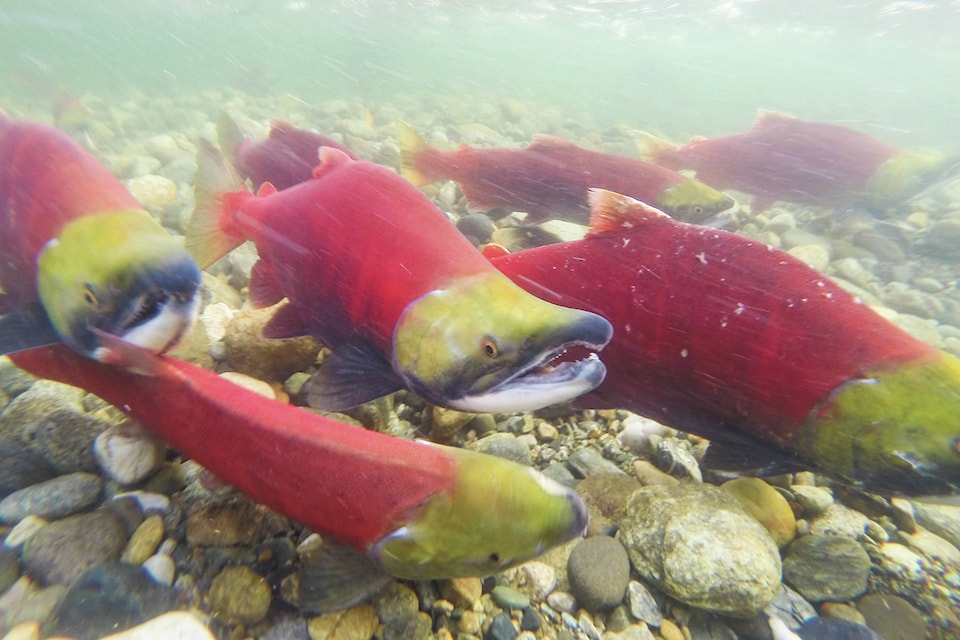And so it begins.
Millions of late-run sockeye salmon are due to return to the Shuswap in this the dominant year of a four-year cycle.
Mike Lapointe, senior biologist with the Pacific Salmon Commission, says some 157,000 late-run sockeye have already entered the Fraser River and test fisheries indicate another 200,000 to 250,000 are holding off near the mouth of the river.
“There’s no big build-up yet,” he said Aug. 16, pointing out the numbers only account for about 357,000 to 407,000 of the 6.9 million forecast for Shuswap Lake late-run sockeye. “The run is building now but they were expected to meet their 50 per cent timing run by Aug. 17.”
Lapointe was hoping more salmon would arrive near the mouth of the Fraser River in the following few days.
“It looks like it has been a slow start, but things have picked up and we’re seeing a significant abundance,” he said. “Most of the sockeye are coming from the Juan de Fuca Strait, through the U.S. and back up to the Fraser River.”
Lapointe says about 75 per cent of the run is coming that way with the other 25 per cent heading from the north.
While test fisheries are giving officials a “so-far-so-good” degree of confidence, Lapointe has concerns for the fish that have already entered the river for the 600-kilometre-plus voyage to their Shuswap spawning grounds.
“It’s so early to really know, but the handful of early starters have a pretty poor chance to survive to October,” he says of the peak spawning time on the Adams. “In the first two weeks of August, the temperature in the river was 22 C or above.”
Water depth and temperature play a huge role in the survival rate of migrating sockeye, with a temperature of more than 20 C being a real cause for concern.
“It’s interesting, in the last few days the temperatures have been lower than forecast,” he says, noting the presence of smoke from a number of wildfires is possibly having a mitigating effect. “Right now the river is crappy and the fish in there now are going to have a tough time.”
Comparing the river to a bathtub, Lapointe says shorter days and cooler overnight temperatures should also help. And he’s hoping the rest of the sockeye and other stocks that are not on their way yet will encounter temperatures that are more hospitable.
Related: Salmon Society to host symposium
Lapointe is also hopeful a new assessment tool that compares the ratio of late-run sockeye to early summer stocks returning to Scotch Creek, Seymour, Anstey and Eagle rivers might bode well for the Adams run.
He says estimates for the early summers are creeping up to the median forecast of 1.8 million.
Smolts from both runs would have left for the Pacific Ocean at the same time and if the forecast for early summer stocks proves right, it could mean later stocks will do just as well.
“If we get 1.8 on the early run it would suggest the late run might be a bit better than originally forecast,” he adds. “The smolts are reared in the lake, are coming out at the same time and in the same ocean, so hopefully they’ll have the same survival rate.”
@SalmonArm
barb.brouwer@saobserver.net
Like us on Facebook and follow us on Twitter
